Hoodoo Hoodoo (Hoodoo Man Blues)
Hoodoo Hoodoo (Hoodoo Man Blues)
Hoodoo, known as “Ggbo” in West Africa, is African-American folk magic. It consists mainly of African folkloric practices and beliefs with a significant blend of American Indian botanical knowledge and European folklore. It is in no way linked to any particular form of theology, and it can be adapted into numerous forms of outward religious worship. Although it is not a religion, there are elements of African and European religions at the core of hoodoo beliefs. Teachings and rituals are passed down from one practitioner to another—there are no designated priests or priestesses and there are no divisions between initiates and laity. Rituals vary depending on the individual performing them; there is no strict approach that one must adhere to. Today, hoodoo is mainly practiced in the Southern United States, and most people who practice hoodoo are Protestant Christians.
Hoodoo Man Blues
“Hoodoo Hoodoo” is a blues written by John Lee “Sonny Boy” Williamson I. First recording by Sonny Boy Williamson - August 6, 1946, first release - March 1947.
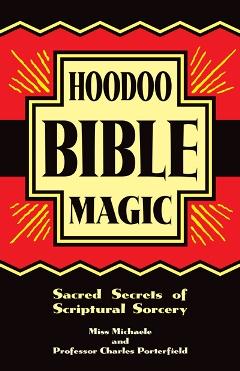
Hoodoo Bible Magic
John Lee Curtis "Sonny Boy" Williamson (March 30, 1914 – June 1, 1948) was an American blues harmonica player, singer and songwriter. Williamson was born in Madison County, Tennessee, near Jackson. While in his teens he joined Yank Rachell and Sleepy John Estes, playing with them in Tennessee and Arkansas. In 1934 he settled in Chicago and began playing with Robert Nighthawk, Big Joe Williams, Tampa Red and Big Bill Broonzy.
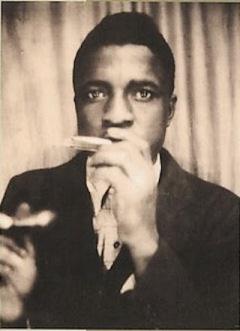
John Lee “Sonny Boy” Williamson
A chiefly self-taught virtuoso, he began recording for Bluebird Records in 1937, singing and playing harmonica. His first great song was "Good Morning Little Schoolgirl," an instant classic that was later covered numerous times, by bands such as the Yardbirds and the Grateful Dead. Other hits from that year include "Sugar Mama Blues" and "Blue Bird Blues," both of which are also regarded as early classics.
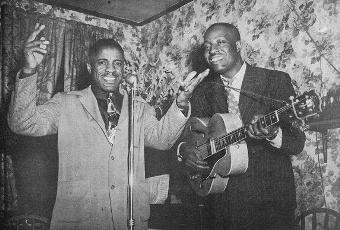
John Lee Williamson & Big Bill Broonzy
With his unrivaled harmonica playing and vocal skills that were unique and instantly recognizable (due to a speech impediment), Williamson began to churn out records that would redefine the blues sound, cutting more than 120 over the next 10 years. Beyond being popular, Williams' songs featured a harmonica sound that would become undeniably influential. Songs such as "Decoration Blues" and "Whiskey Headed Woman Blues" were followed by "T.B. Blues," "Tell Me Baby" and "Jivin' the Blues," "Stop Breaking Down", and "Hoodoo Hoodoo" (also known as "Hoodoo Man Blues"), all of which went a long way to solidify his reputation and made him the most influential harmonica player of his generation.
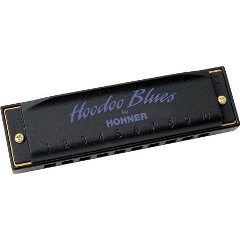
Hoodoo Blues Harmonica
In 1947, Williamson's song "Shake the Boogie" was a nationwide hit, and he was at the height of his fame. Unfortunately for Williamson and the blues world, he would not live much longer. In June 1948, Williamson was returning from a performance on Chicago's South Side when he was robbed, beaten and stabbed with an ice pick. He died on the sidewalk, only 34 years old. Easily the most important harmonica player of the pre war era, John Lee Williamson single-handedly made the harmonica a worthy lead instrument for blues bands and opened the door for many players such as Little Walter, Billy Boy Arnold and Junior Wells.
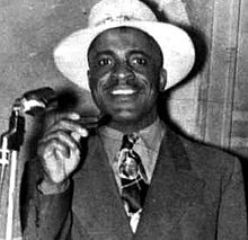
John Lee “Sonny Boy” Williamson
Bob Koester, a Record Producer and founder and Chicago label Delmark record, had heard Don Kent, of Yazoo Records, and others whisper about a kid who played the harp. They said he’d been playing since the age of seven. They said he learned it from Sonny Boy Williamson II. They said he was good, so good, in fact, that he replaced Little Walter to blow for Muddy at 18.
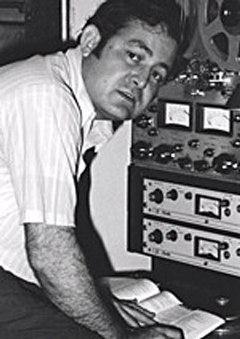
Bob Koester
It was 1965 and Junior Wells was no longer the precocious teenager who had gotten the likes of Muddy Waters, Elmore James and Otis Spann to back him up on his 1953 and 1954 hit singles. Now 30, he was a fixture of that generation of electric Chicago bluesmen. And he was about to make an album that has long been a staple of any modern blues collection.
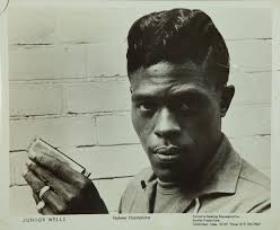
Junior Wells
Albums were not yet a big part of the blues scene. Most were greatest hits compilations, often of older artists being “rediscovered.” Blues was a music of 78s and 45s sold in barbershops and corner stores. But blues was also getting a wider audience in 1965, and albums in general were becoming a bigger deal to listeners of all popular music genres. And so it was that Bob Koester got Junior Wells into Sound Studios with his Chicago Blues Band of Buddy Guy (guitar), Jack Myers (bass) and Billy Warren (drums) to record “Hoodoo Man Blues.”
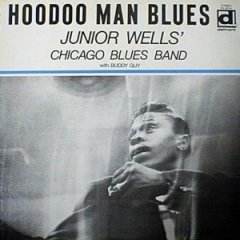
Junior Wells - Hooddoo Man Blues, 1965
Wells’ raw, earthy voice, punctuated by harmonica, is spellbinding. Smoother than Howlin’ Wolf, as sexy as Muddy in his prime, he struts, coos, laughs, threatens and generally commands your absolute attention. The title track and “Good Morning Little Schoolgirl” come from the original Sonny Boy Williamson’s songbook, but Wells puts his own stamp on the material with his tough vocals and polished harmonica work. “Schoolgirl” is especially interesting as the song breaks down near the conclusion, just before Guy ties up the proceedings with a strong ending riff. The title track comes after, leading off side A with another fanfare, a classic blues turn around in which the band bangs out together, compounding the swinging 4/4 blues rhythm to create a rambling, tumbling feeling that propels the listener into the center of the groove, where it is instantly apparently that Buddy Guy’s guitar sounds remarkably different.
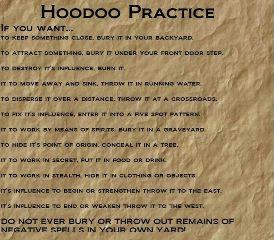
Hoodoo Practice
When Guy’s amplifier crapped out, he was wired into a Leslie organ amp, and you can hear the terrific results of this on the title track, “Hoodoo Man Blues,” where the resulting thick sonics add a jazzy feel to the stomping affair. When Wells lowers the heat, you hear not only a singer with a special ability to add emotional dimension to his lyrics with his savvy phrasing and vocal marginalia (spoken asides), but clearly a singer whose impact on one Mick Jagger was profound—on “Early In the Morning” and “Hoodoo Man Blues” the mix of rushed phrases and deep, drawled passages is practically a blueprint for the style Jagger perfected as the ‘60s rolled on and which fully flowered for him on Exile On Main Street. In fact, you could pretty much cite any of Wells’s vocals on Hoody Man Blues as the prototypes for the mature Jagger style.
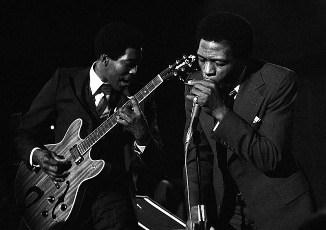
Buddy Guy & Junior Wells
For decades, this set (album) has been considered one of the top 10 post-war blues albums. In daring to allow Wells and his mates to be the first Chicago blues band to record an album designed to be an entity unto itself, with no tracks being culled for single release, Koester was rewarded by “Hoodoo Man Blues” earning unanimously rave reviews and becoming Delmark’s all-time best selling album, as it remains today. To wit: “Hoodoo Man Blues” is not only Junior Wells’ initial LP appearance, it is damn near the first LP by a Chicago blues band.
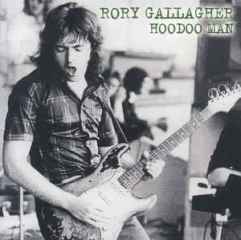
Rory Galagher - Hoodoo Man
Hoodoo Hoodoo by John Lee "Sonny Boy" Williamson
Lord, I wonder what's the matter this time,
it seems like everything has changed
It seems like this woman that I've been lovin'
have found some other man
I hold up my hand,
I'm just trying to get my baby to understand
See, my baby don't love me no more,
all because somebody hoodoo'd the hoodoo man
One night I'm goin' down into Louisiana
and buy me another mojo hand
All because I got to break up my baby
from lovin this other man
I hold up my hand,
I'm just trying to make my baby to understand
Aw, my baby don't love me no more,
she says somebody hoodoo'd the hoodoo man
I use to have a way with women,
make plenty of money, and everything
But my woman don't love me no more,
she says somebody hoodoo'd the hoodoo man
Now I just hold up my hand,
I'm just trying to get my baby to understand
Aw, my baby don't love me no more,
she says somebody hoodoo'd the hoodoo man
Well now, goodbye, baby,
someday I will see you soon
I got something to tell you, baby,
somebody else can have your room
And I just hold up my hand,
I'm just trying to get my baby to understand
Well, my baby don't love me no more,
she says somebody hoodoo'd the hoodoo man
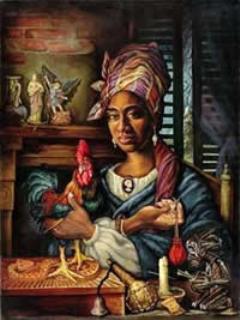
Hoodoo Woman
Lightnin' Slim & Lazy Lester – Hodoo Man Blues
Last Updated (Friday, 02 June 2017 16:22)








